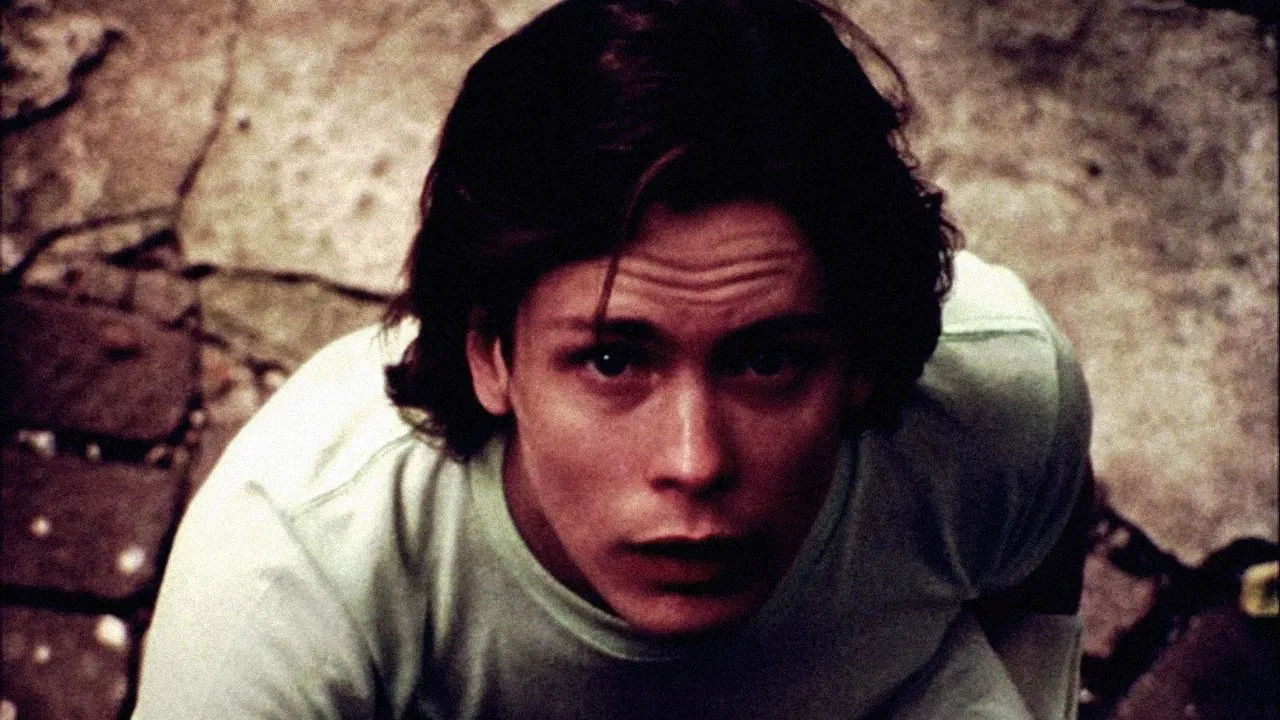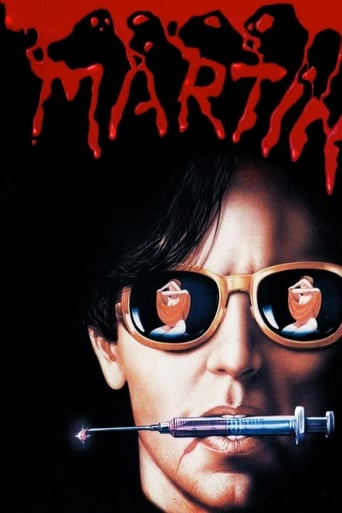

Arriving in Pittsburgh, a young man visiting his cousin realizes that his vampire nature is continually getting the better of him as he stalks the residents of his small-town and finally forces those around him to put him away for good before his rampage puts the family in danger.For the most part, this one is quite an unconventional and troublesome effort. Most of the film's problems actually center around the fact that the change done to the central figure brings about plenty of rather troubling inquiries. By shifting away from the traditional form of the bloodsucker who now doesn't need piercing fangs to drain his victims and can't pass the curse on like a transmitted disease, much of the fear is taken completely out of the main character who now comes off merely like a nominal psychopath. Drugging people and using razors to slice them open so he can feed are tactics that just don't in the slightest appear to induce fear or scares in the main lead, and since this is the attack method for the film that leaves so many of the scenes without any kind of tension that usually appears in the genre's efforts. The fear mainly comes from his antics and the fact that he's going around on the prowl, but that doesn't generate as much as the more clichéd elements generate which is why those clichés are often featured since the behavioral changes don't really make this feel like a true horror film. That also reduces the actual stalking scenes into an incredibly tired and laughable tactic of him hitting and running away which is completely against the normal vampire rules of attack that the extended nature of these scenes are caused merely by the inclusion of such behavior changes. Likewise, there's also the fact that the film's desire to spend a vast majority of time on the home-life between the family where everyone's continually trying to get through their lives without being interrupted by his condition makes for some really bland and boring scenes as the family dinners or scenes of him out delivering meals from his work that are just so dull and bland. They're just so uninteresting that there's little about these that raise the film up into any kind of watchable status as so little of the film really strikes a chord, even the other subplots such as the affair with the housewife or his cousins' desire to start her own life which take up so much of the film. With so few attacks here to really generate any kind of interest, the film is instead forced to try a series of incredibly artistic and rather bland tendencies to try to generate interest in between these segments, either by going for a series of haunting black-and-white flashbacks to silent sequences showing him at work or preparing to go out which injects some life in the film but really highlights how few scenes of him attacking others there actually are in the film. Those, though, are where the film actually works the best by providing this with so much of its original moments. The opening action-packed attack on the train is rather chilling with the darkened stalking, the brawl in the car and the eventual aftermath of what happens gives this a strong opening. The lengthy attack on the cheating couple is rather enjoyable, despite the length because of his attack style, and the finale in the shop makes for a nice conclusion which is rather frenetic and ends on a fine note. It does get points for creativity, but that's about all it has going for it.Rated R: Graphic Violence, Full Nudity, Graphic Language and drug use.
... View More"Martin" follows the titular character, an awkward young man who has delusional fantasies about being a vampire. After relocating from Indiana to a small Pennsylvania town, he moves in with his cousin and aged grand uncle, where his vampiric tendencies begin to spiral out of control.One of George Romero's more understated offerings (I'd liken it in tone to his offbeat 1973 effort, "Season of the Witch"), "Martin" is as much a psychological character study as it is a horror film; in fact, it's something of a collision of the two. The film begins with a disturbing date rape scene-turned-bloodletting that is discomforting to say the least. This sets the tone for the remainder of the film, which is downbeat and atmospherically dreary, largely evoked through the idyllic small-town sets and emotive camera-work. Black-and-white photography is utilized to full effect for the vampiric fantasies, which are surreal and eerie.The success of the film largely depends on John Amplas's performance as the title character, and he does the character justice. Martin is both sympathetic and abhorrent, disturbed and misunderstood—the balance struck between both extremes is nuanced, and the tension within the character's identity is where the majority of the film's power lies. The conclusion of the film is in line with its downbeat tone, and renders the film something of an unexpected modern horror tragedy.Romero has said that "Martin" is his favorite of all his films, and it's understandable why. It feels like one of his most personal works (perhaps his most personal), and Martin as a character is able to evoke a multitude of feelings from the audience. The film is both disturbing and amusing, horrific and depressing—it also maintains a high-brow aesthetic throughout in spite of its budgetary limitations. An understated, atmospheric, and compelling character study that functions just as well as a horror film. 9/10.
... View MoreI was 17 when I saw this movie. I so identified with the character of Martin that I wasn't able to view the film objectively. I absolutely lived his disengagement with the rest of the world. Although, in my defence, I did manage to restrain myself from performing any of the more extreme forms of behaviour. But essentially that was my life. I seemed to be surrounded by grim old people who didn't understand me. Like no teenager has ever experienced that!!!It's funny what scenes stayed with me through the years. Apart from all the sex and violence, I clearly remember the Shriners parade and the ghastly brown and orange interior decor (Yeeuurgh!)I recently had a chance to see it again, but this time viewed through the eyes of a fat, bald, middle-aged man who has lost interest in cheesy horror-flicks. I am astounded at what a good film it is. Romero managed to challenge all our perceptions of what a vampire should be. Instead of a sophisticated, intelligent but driven aristocrat here was a stupid, callow youth with no social skills. Was that really me?
... View MoreThat was the time before profiling and before scientific police, and even before the plague known as AIDS. Romero in his young age had to play the priest in this film of his, be the screenplay writer and the director. He had to do what so many others had done and have his own true, real Nosferatu or vampire or Count Dracula film. And here it is. Though it is shown as an old superstition from the old continent that has moved to the new continent, there is no rejuvenation, no renaissance, no second life to the myth and the end is to be expected and not to be in any way suspected or doubted. Then the film loses all its power because there is no escape for the poor Martin and no way out for the whole story that is self contained and locked up in a dying if not dead myth. Now does the technique used by Romero give a second life to that myth? Certainly not. A syringe does not frighten anyone. Some thick red blood does not disgust anyone. So it is flat and there is no way to find any depth in this cheap film.Dr Jacques COULARDEAU, University Paris Dauphine, University Paris 1 Pantheon Sorbonne & University Versailles Saint Quentin en Yvelines
... View More